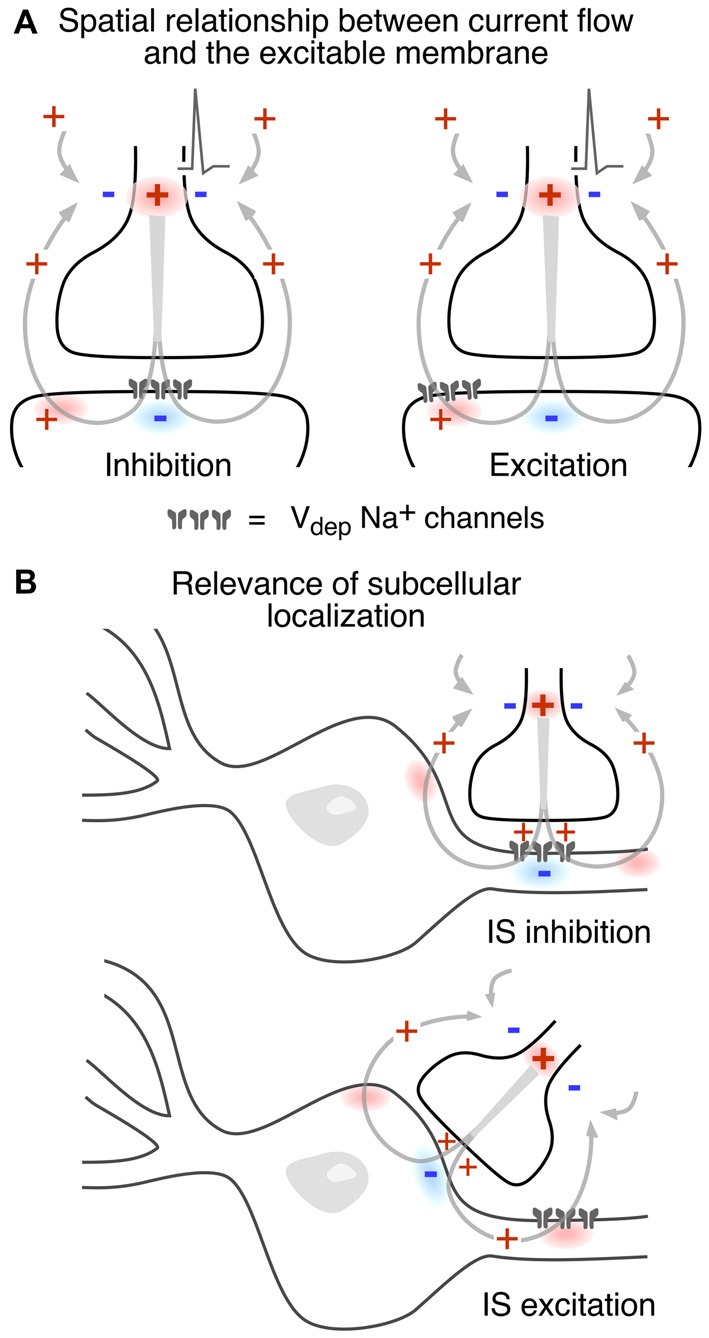Figure 5.

Presynaptic electric fields can exert both excitatory and inhibitory actions on a postsynaptic cell. (A) Whether an ephaptic current is excitatory or inhibitory depends on both the direction of current flow and the properties of postsynaptic membrane. The schematic model contact establishes the same currents in both examples, but excitable postsynaptic membrane, depicted as a cluster of voltage-dependent Na+ channels, is either restricted to the contact zone, in the case of electrical inhibition, or is displaced laterally, for electrical excitation. (B) The subcellular localization of presynaptic contacts also influences the polarity of an ephaptic synapse. Upper and lower schemes contrast axo-axonic and axo-somatic “electrical” synapses, respectively. The former is inhibitory because an inward hyperpolarizing current is imposed upon excitable postsynaptic membrane while the latter is instead excitatory because the current across the postsynaptic excitable membrane is outward.
